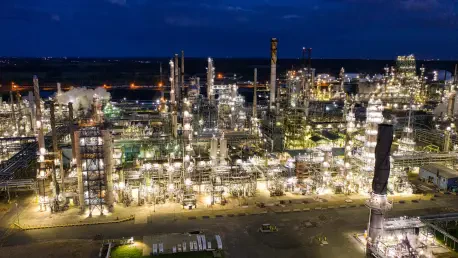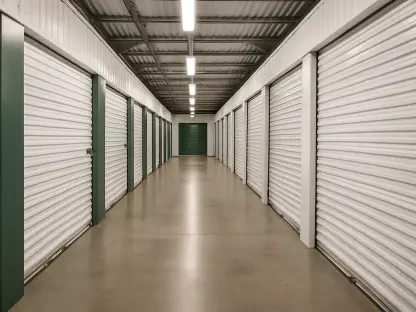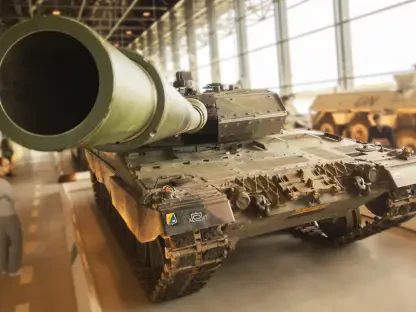Europe’s petrochemical industry finds itself at a critical juncture, confronting economic hurdles while grappling with a surge in global competition. Persistent high production costs, an increasing reliance on aging infrastructure, and China’s significant increase in capacity are formidable forces shaping the current landscape. These challenges are compounded by a substantial wave of plant closures following years of financial losses. This shift has necessitated a greater dependence on imports, with remaining facilities struggling to maintain economic viability, often operating below optimal capacity.
Economic Pressures and Strategic Moves
Aging Infrastructure and Rising Production Costs
The issue of aging infrastructure cannot be overstated as a fundamental barrier impacting the European petrochemical sector. Many facilities, established several decades ago, are now operating far beyond their intended design life without significant modernization. This results not only in rising maintenance costs but also in inefficiencies that further inflate production expenses. The contrast is striking when compared to other regions, particularly Asia, where state-of-the-art facilities are coming online, designed for optimal productivity and efficiency from the outset.
Europe’s high labor costs, coupled with stringent environmental regulations, add another layer of complexity that raises the overall production expenditure. Unlike some of its global counterparts that benefit from cheaper raw materials and energy sources, European facilities have to navigate these elevated costs, often translating into thinner profit margins. As a response, companies and policymakers are faced with the daunting task of navigating regulatory frameworks that balance economic competitiveness with sustainability concerns. Various stakeholders are urging the adoption of innovative technologies and eco-friendly practices to address these twin challenges, yet the pace of these initiatives remains subject to substantial debate.
Global Competitive Expansion: A Case Study in Contrasts
The landscape outside Europe paints a picture of aggressive expansion and strategic scaling in the petrochemical sector, particularly in Asia and the United States. Countries like China are not only increasing their capacity but also investing heavily in new technologies and infrastructure, positioning themselves as formidable competitors on the global stage. This rapid expansion facilitates economies of scale, offering products at a lower cost and undercutting European producers in various markets.
Industry experts highlight that, while other regions are steadily expanding with as many as 20 new facilities, Europe’s equivalent investments in the sector have lagged behind. This disparity emphasizes a growing competitiveness gap, with some industry leaders drawing parallels to a sinking “Titanic,” cautioning of an unavoidable decline if timely interventions are not adopted promptly. The European Commission has mapped out plans to support strategic chemical production through targeted state aid, intending to bolster competitiveness. However, implementing these initiatives requires overcoming significant bureaucratic hurdles and securing cross-sectoral cooperation.
Strategic Shifts and Future Implications
Modernization Initiatives and Policy Evolution
Acknowledging the precise challenges posed by antiquated facilities, there is a concerted push within the industry to accelerate modernization efforts. Eni’s pivot to bio-refineries and chemical recycling exemplifies these adaptive strategies, carving pathways for long-term sustainability in response to market dynamics. By transitioning towards innovative fields that align with global demands for environmentally conscious practices, Eni seeks not only to preserve existing assets but also to create new opportunities for growth.
Concurrently, sector leaders are exploring collaborations with state bodies and academic institutions to drive research into chemical recycling and advanced production methods. This strategic emphasis on modernization, however, requires significant capital investment, a daunting prospect against a backdrop of broader economic uncertainties. Industry stakeholders have recognized the need to align modernization with evolving policy initiatives to foster an environment conducive to seamless transitions.
Employment Impact and Economic Repercussions
The petrochemical industry in Europe stands at a pivotal point, encumbered by economic challenges and heightened global competition. High production costs persistently strain the sector, exacerbated by its reliance on outdated infrastructure. Additionally, China’s significant expansion in manufacturing capacity is a formidable threat that’s reshaping the competitive landscape. This perfect storm of factors has led to substantial pressures, resulting in numerous plant closures. These facilities had suffered extended periods of financial losses, ultimately becoming economically nonviable. As a result, the industry is now significantly more reliant on imports to meet demand. The plants that remain open often operate below their optimal capacity, further squeezing profitability. This scenario underlines the urgency for strategic innovation and investment in new technologies and infrastructure to rejuvenate the sector. Adapting to these changes is crucial not just for survival but for ensuring Europe’s competitive edge in the global petrochemical market.









